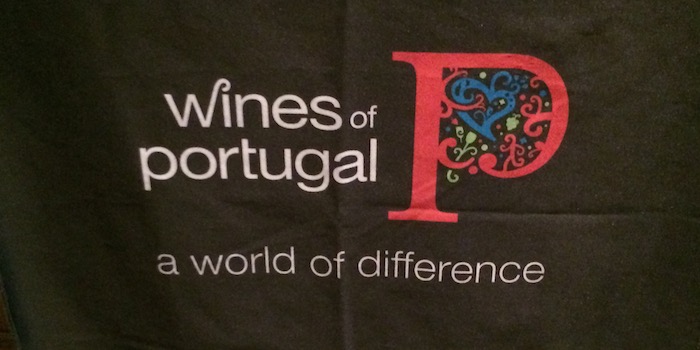Portugal is the relative size of Maine. Nevertheless, the country contains the ninth largest total vineyard area in the world. It also ranks eleventh globally in wine production, and eighth in per-capita wine consumption.

Portugal natives love their wine, and in turn produce some seriously good bottles.
This past Tuesday, I toured the country’s vineyards and varietals. I did not take a plane there but a subway, with the final destination my seat at the Wines of Portugal master class at City Winery in Manhattan. The class was led by Evan Goldstein, of easygoing humor and extraordinary wine knowledge.
Portugal runs between the western edge of Spain and the Atlantic Ocean. Naturally, there is difference between grapes grown closer to the coast versus more inland. Nearer seaside, where rainfall is higher, whites tend to be brighter, with a hint of salt, crunchier acidity and lower ABV; “Liquid electricity,” as Goldstein described them.
Farther inland, wines are more structured, less austere. They become richer and sweeter. These include the world-famous ports of the Douro region.

Though not all inland reds are so heavy. The Wines of Portugal class encompassed 10 wines, the ninth of which — the 2012 Poeira Tinto — was restrained and elegant. A “field blend” of reds, it focused on freshness, acidity, and layered nuances. The wine was made from vines aged between 5 and 70 years.
Olga Martins, Co-Proprietor of the Poeira estate in Douro, was one of many Portugal winemakers on hand to talk about their products. She compared the 2012 Poeira Tinto to a person in a room who is interesting not for their loud personality but their calmness, intellect and observations. It was an apt metaphor for a quietly complex wine.
Top-level female winemakers like Martins are common to Portugal, Goldstein explained, as are “field blends.” In general, blends are the dominant style. Most wines we sampled were a mix of multiple grapes, up to seven.

This high degree of blending, plus the Portugal grapes unusual to the American palate, made for some funky aromatics and tastes. Especially in the 2011 Campolargo Rol Coisas Antigas Tinto and 2009 Mouchão Tinto. They had earthy, highly toned notes.
Overall, the traits most among Portugal wines were balance and acidity. Particularly the former. Wines we sampled were diverse in style and composition, but unified in their palate-pleasing balance.
After the class we went next door for the showcase of Portugal wines. Hundreds of bottles were available for tasting. I beelined to the Poeira booth. Goldstein recommended we try some Douro whites, and I wanted to see if Poeira could match the elegant nuance of its red with a white.
What Martins poured me — Pó de Poeira White — did not disappoint. Again, elegant, layered, soft-spoken, and balanced. Portugal wine lives up to its reputation, and is well worth getting your hands on. Next time, maybe I’ll be lucky enough to skip the subway and take a plane.




